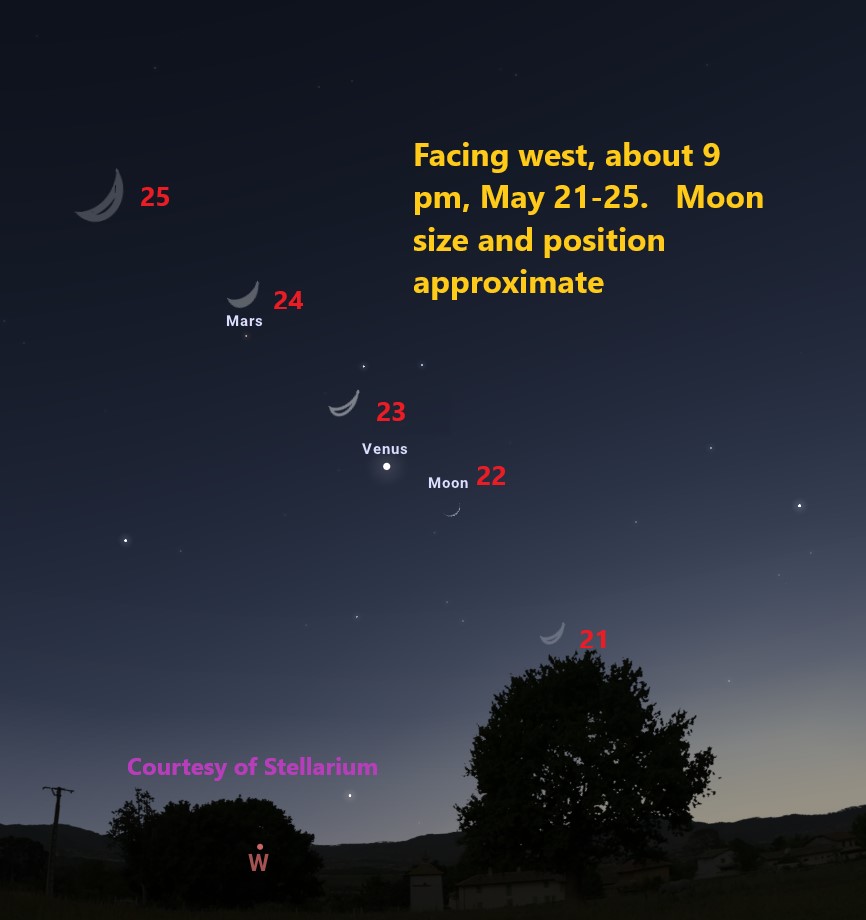SISTER PLANET ACT
May is the favorite month for many people. Temperatures are rarely extreme, schools are winding down, and I have found that our Park visitors are often in a good mood this month. As the Sun sets and skies begin to darken on May evenings, everyone’s attention will be drawn to the super-bright starlike object seen to the west- none other than the planet Venus. Often considered Earth’s “sister planet” due to its being nearly the same size as Earth as well as being relatively close by, the two planets actually have little else in common. Venus is surrounded by a think atmosphere, mostly of carbon dioxide, with clouds made up of sulfuric acid that reflect the Sun’s light very well. This causes Venus’ brilliance in our skies. Unless seen against a bright twilight background, it always far outshines all objects in the sky except for the Sun and Moon. A number of spacecraft have landed on Venus, but none have remained in contact with Earth for even as long as two hours, being crushed by massive surface pressure or fried by temperatures hot enough to melt lead.
There is an eight-year cycle of Venus apparitions, and this May marks the peak of the entire cycle of evening views, as seen from Earth’s northern hemisphere. If the sky is quite clear, it is not hard to glimpse Venus before sunset, especially on a night when the Moon is nearby to point the way (see below). Venus shines quite high in the west during the early evening, gradually sinking towards the horizon, but remaining visible until almost midnight this month. Once the sky is dark enough, note Venus’ position relative to the background stars- you should notice a change in just a day or two. Our sister planet’s cloudy atmosphere usually causes Venus to look like a brilliant featureless orb in a telescope, displaying moonlike phases. The crescent phase will be striking in July.
Venus takes just 224 days, or 7 ½ months, to orbit the Sun. This fast motion will eventually cause it to appear more and more between the Earth and Sun as we move into the summer months. This causes its apparent height above the western horizon and the interval between sunset and Venus-set to gradually decline during June and early July, and then becoming a headlong plunge. We will lose sight of Venus in the Sun’s glare before the end of July, depending upon the clarity of the sky as well as whether or not you use binoculars or a telescope. I will discuss Venus’ dramatic exit in the July edition of this blog.
Each month, the crescent moon will pass Venus in the sky, closest on May 22-23, June 21, and July 19-20. The unlit part of the Moon is illuminated by reflected light from Earth, causing earthshine. Try snapping a picture of the duo on those days, weather permitting.

Join us for the first Gateway to the Stars program for 2023. Learn about some of the animals that inhabit Gateway Arch National Park in an educational presentation held outside the Main Entrance at 7 pm on Friday, May 26. Weather permitting, this will be followed by free telescope viewing provided by the Park and by volunteers from the St. Louis Astronomical Society. Call 314-655-1704 the day of the event for a weather update, or for more information.
